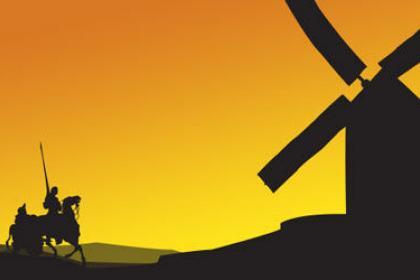
2016 marked the 400th anniversary of the death of Miguel de Cervantes. His great novel, “Don Quixote,” was published in 1605 and was partly written while the author was in prison. Since then, it has earned admiration from other great writers. The Bokklubben World Library, a poll of writers in 54 countries conducted by the Norwegian Book Club in 2002, selected “Don Quixote” as the greatest literary work.
Cervantes had an eventful life. He was injured in the battle of Lepanto in 1571, captured by Barbary pirates, and enslaved for five years in Algiers by the Ottomans. After he was freed, Cervantes became a playwright and a tax collector and was briefly imprisoned because of irregularities in his work as the latter. It was during this stint in prison that he began to write “Don Quixote.”
A Revolutionary Work of Literature
Not only was this book one of the first fictional works, it contained many special features. As the story was seen through the viewpoints of different characters, the writer’s vision can be seen for the first time in this book. This revolutionary literary structure for its time also depicted chivalry in a sardonic manner—another unusual aspect of the novel.
Harold Bloom, the literary critic, and others consider this 17th century novel to be the first modern novel. According to Bloom, the arcs of change mark the novel’s separation from the past; while for Carlos Fuentes, it is the characterization and dialogue that distinguish the novel from earlier works.
The title character, as described in a letter Feodor Dostoevsky wrote to his niece, was the “most perfect” literary hero. Both the author and his protagonist were idealists who had a tough time in their lives. Fighting windmills was symbolic of fighting for ideals even though loss was expected. Cervantes believed that standing up for ideals mattered more than achieving success.
Other Notable Facts
Parts of the story were taken from the author’s own life, such as the incident where the nobleman and his sidekick Sancho Panza free some galley slaves. During his period of enslavement, Cervantes tried to escape several times. His wife’s great uncle was the source for the nobleman’s characterization and the protagonist’s revealed real name, Alonso Quixano.
The book was written in a modern variant of Spanish, and its popularity mainstreamed this new development.
“Don Quixote” still earns praise, even from a business professor! In his film, “Passion and Discipline: Don Quixote’s Lessons for Leadership,” former Stanford professor and poet James G. March uses the hero to distill parts of his famous “Organizational Leadership” course.



